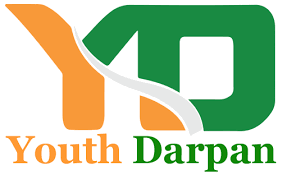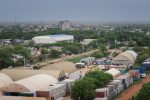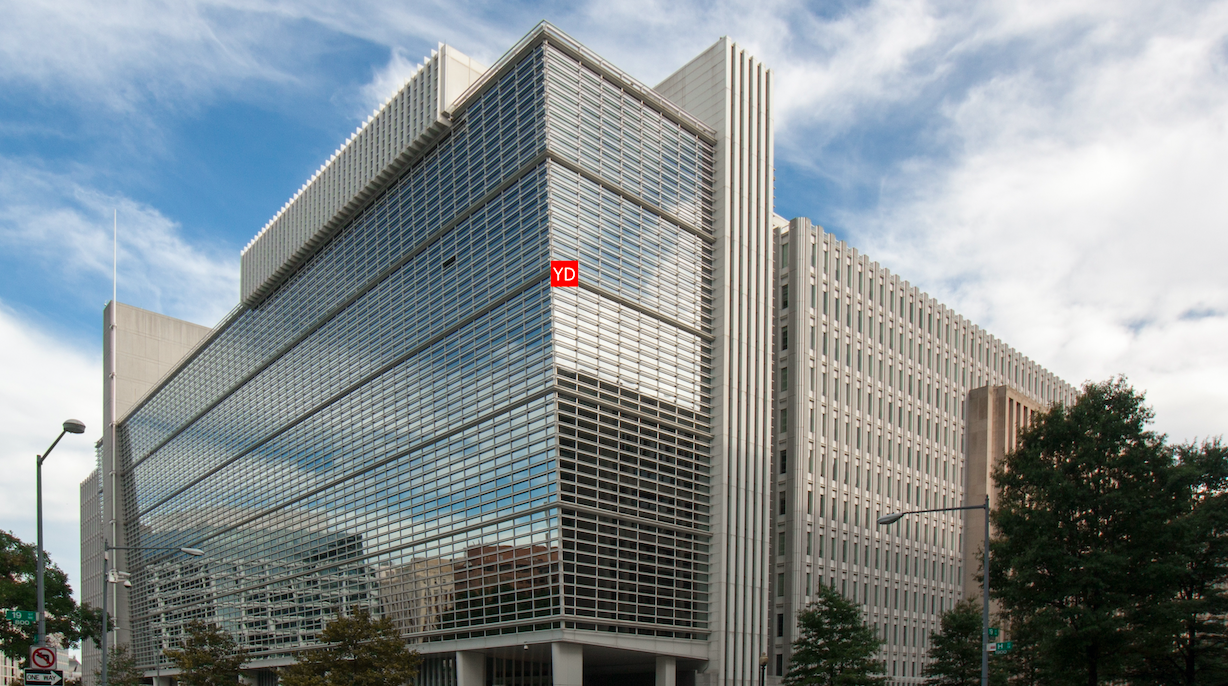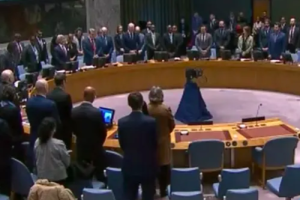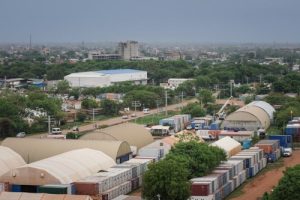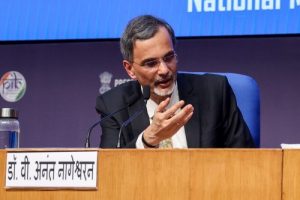According to a report published by World Bank (WB) on Oct 13, After a broad-based deceleration in the initial quarters of this fiscal year, India’s growth rate is projected to fall to 6%. In 2018-19, the growth rate of the Nation stood at 6.9%. Further, Bangladesh and Nepal are estimated to grow faster than India in 2019, which mark that overall growth in South Asia is projected to slow down this fiscal in line with a global downward trends, according to the World Bank. Although, the WB in its latest remark of the “South Asia Economic Focus” mentioned that, the country (India) was expected to gradually recover to 6.9% in 2021 and 7.2% in 2022 as it assumed that the monetary stance would remain accommodative, given benign price dynamics.
Jobs are key to ending poverty and fueling economic growth, but what is the key to creating jobs? https://t.co/TGRnhQgzIV #jobs4growth #WBGmeetings
— World Bank (@WorldBank) October 11, 2019
Comparatively, In Afghanistan, with improved farming conditions and assuming political stability after the elections, growth is expected to recover and reach 3% in 2020 and 3.5% in 2021. In Bhutan, GDP growth is expected to jump to 7.4% this fiscal year. In Maldives, growth is expected to reach 5.2% in 2019. In Sri Lanka, growth is expected to soften to 2.7% in 2019. However, supported by recovering investment and exports, as the security challenges and political uncertainty of last year dissipate, it is projected to reach 3.3% in 2020 and 3.7% in 2021. “Pakistan’s economy is slowing as the country passes through yet another macroeconomic crisis with high twin deficits and low international reserves. With an IMF Extended Fund Facility supported stabilization program in place, growth is expected to remain low in the near-term,” the WB recent report attributed.
Moreover, The report remarked that, which has been released ahead of the annual meeting of the WB with the International Monetary Fund (IMF), It noted that India’s economic growth decelerated for the second consecutive year. In 2018-19, it stood at 6.8%, down from 7.2% in the 2017-18 financial year. While industrial output growth increased to 6.9% due to a pick-up in manufacturing and construction activities, the growth in agriculture and the services sector moderated to 2.9 and 7.5%, respectively. In the first quarter of 2019-20, the economy experienced a relevant and broad-based growth deceleration with a sharp decline in private consumption on the demand side and the weakening of growth in both industry and services on the supply side, the WB report attributed.
Read Also, India’s GDP growth slumps to 5%: “Measures to Achieve Higher Growth”
Reflecting on the below-trend economic momentum and persistently low food prices, the headline inflation averaged 3.4% in 2018-19 and remained well below the RBI’s mid-range target of 4% in the first half of 2019-2020. This allowed the RBI to ease monetary policy via a cumulative 135 basis point cut in the repo rate since January 2019 and shift the policy stance from “neutral” to “accommodative”. Following the PTI news agency report, It said that the current account deficit had widened to 2.1% of the GDP in 2018-19 from 1.8% a year before, mostly reflecting a deteriorating trade balance. On the financing point of view, significant capital outflows in the first half of the current year were followed by a sharp reversal from October 2018 onwards and a build-up of international reserves to USD 411.9 billion at the end of the fiscal year.
#DidYouKnow that just 5 countries are home to half of the world’s extreme poor? https://t.co/vcn8gVPAMh #CountPovertyOut #EndPoverty pic.twitter.com/hvudMbixU7
— World Bank (@WorldBank) October 11, 2019
Likewise, while the rupee initially lost ground against the USD (12.1% depreciation between March and October 2018), it appreciated by about seven per cent up to March 2019. Further, “The general government deficit is estimated to have widened by 0.2 percentage points to 5.9% of the GDP in 2018-19. This is despite the central government improving its balance by 0.2 percentage points over the previous year. The general government debt remained stable and sustainable – being largely domestic and long term-at around 67% of GDP,” the WB report remarked. Following the same, poverty has continued to decline, albeit possibly at a slower pace than earlier. Between 2011-12 and 2015-16, the poverty rate declined from 21.6 to 13.4% (USD 1.90 PPP/day). The significant slowdown in the first quarter of the fiscal year and high frequency indicators, thereafter, suggested that the output growth would not exceed 6% for the full fiscal year, the WB added in a statement.
Read Also, India recognises the need for environmentally sustainable development strategy
It also highlighted the consumption was likely to remain depressed due to slow growth in “rural income”, “domestic demand” (as reflected in a sharp drop in sales of automobiles) and credit from non-banking financial companies (NBFCs). However, the investment would benefit from the recent cut in effective corporate tax rate for domestic companies in the medium term, but also will continue to reflect financial sector weaknesses, the report remarked. “Growth is expected to gradually recover to 6.9% in 2020-21 and 7.2% in 2021-22 as the cycle bottoms-out, rural demand benefits from effects of income support schemes, investment responds to tax incentives and credit growth resumes. Although, exports growth is expected to remain modest, as trade wars and slow global growth depresses external demand,”. The report, however, remarked disruptions brought about by the introduction of the GST and demonetisation, combined with the stress in the rural economy and a high youth unemployment rate in urban areas may have heightened the risks for the poorest households.
Thus, The main policy issues for the country is to cycle the sources of softening ‘private consumption’ and the ‘structural factors’ behind weak investment. “This will require restoring the health of the financial sector through reforms of public sector banks” governance and a gradual strengthening of the regulatory framework for NBFCs, while ensuring that solvent NBFCs retain access to adequate liquidity. “It will also require efforts to contain fiscal slippages, as higher-than-expected public borrowings could put upward pressure on interest rates and potentially crowd-out the private sector,”. The main sources of risk included external shocks that result in tighter global financing conditions, and new NBFC defaults triggering a fresh round of financial sector stress. To mitigate these risks, the authorities would need to ensure that there was adequate liquidity in the financial system while strengthening the regulatory framework for the NBFCs, the WB asserted in a recent report.
Debt financing is crucial for development. However, debt needs to be used prudently and it has to be transparent. @CeylaP_WBG discusses why: https://t.co/nV56OpQmTW pic.twitter.com/o32GKcFAAA
— World Bank (@WorldBank) October 12, 2019
Read Also, Poverty reduced in India but divisive policies undermining growth: UN human rights chief
Significantly, Examining concerns raised on India’s GDP growth rate, The top-up policy makers stressed that while the slowdown of the economy is cyclical, the fundamentals of Indian economy are strong; with surge in foreign investment and domestic demand, GDP growth rate will soon rise. In this regard, The historic decisions were; merger of public sector banks (PSBs), additional credit expansion through PSBs, corporate law reforms, major GST and Income Tax, abolishment of Triple Talaq, Amendment to POCSO Act, pay parity for women, housing for all and extending PM-Kisan to all 6.37 crore farmers is the major step of government.
Prior to the above landmark announcement of GDP figures, the central government on Aug 30 announced its second of the three-part stimulus, merging 10 public sector banks (PSB) into four with a view to boost credit to help revive the Indian economy. In this regard, The government announced capital infusion totalling over ₹55,000 crore into public sector banks such as PNB (₹16,000 crore), Union Bank of India (₹11,700 crore), Bank of Baroda (₹7000 crore), Indian Bank (₹2500 crore), Indian Overseas Bank (₹3800 crore), Central Bank (₹3300 crore), UCO Bank (₹2100 crore), United Bank (₹1,600 crore) and Punjab and Sind Bank (₹750 crore).
It included reduction of taxes, improvement of liquidity in the banking sector (formal and shadow), increased government spending on auto and infrastructure, and accelerated refunds of GST. In a major outreach step to cycle the issues of the ‘farming sector’, which cost the ruling Bharatiya Janata Party (BJP) three state elections last December, The Prime Minister of India extended the scope of the PM-Kisan scheme, to include all the 145 million farmers across the Nation, besides announcing a ‘₹3,000 monthly pension scheme’ for 125 million small and marginal farmers.
Read Also, Budget will facilitate steel industry growth
Despite all of this, As per the, Central Statistics Office (CSO) released India’s economic growth datas for the April-June quarter (‘Q’) of financial year 2020 on August 30. Following this report, The economic growth of India slumped for the fifth straight ‘Q’ (April-June) to an over six-year low of 5% in the three months ended June as consumer demand and private investment were slowed amid deteriorating international environment. Examining this, It has been on account of both ‘exogenous’ and ‘endogenous’ factors/Causes. The Union government is quite alive to the situation especially global headwinds arising out of deceleration in the developed economic and Sino-American trade conflict which has contributed to the slowdown. After agriculture, real estate-construction is the second-largest employer and also has a huge backward and forward linkages with other sectors.
Read Also, RBI lowers GDP growth forecast to 6.9 pc for FY”20 on demand, investment slowdown
So reviving such sectors would be crucial both from the ‘investment’ as well as ‘consumption’ point of view. While the rating agency believed that there is no quick-fix solution to the downturn which has been in the making for the past few years. Notably, Achieving the intention of making India $5 trillion economy; Transparency in Tax system; Jal Shakti Abhiyaan; Har Ghar Bijli Yojna; Ujjwala scheme for gas connections; Ayushman Bharat; social sector protection to unorganized sector workers and small traders; financial assistance to farmers – the largest of its kind in the world; Jan Bhagidari movements, Fit India and campaign against ending menace of single use plastics; measure of good governance; productive of Parliamentary Session; action against corrupt government officers among others are the landmark decisions taken by the government of India.
Globally, On the one hand, India and China on Oct 12 resolved to start a new chapter of cooperation while prudently managing their differences, as Prime Minister Narendra Modi and Chinese President Xi Jinping discussed several key issues, including ways to enhance trade and investment and confidence building measures. The significant outcome of the second Modi-Xi informal summit included setting up of a new high-level mechanism to boost trade and investment, China’s assurance to address India’s concerns in negotiations for the proposed Regional Comprehensive Economic Partnership (RCEP), security cooperation and additional confidence building measures to maintain peace on border. Whereas on the other hand, The joint address by Prime Minister Narendra Modi and US President Donald Trump to a record crowd of over 50,000 Indian Americans was a triumphant moment for Indo-US recent relationship. Meanwhile, US president Trump touched upon every area of bilateral cooperation – from a strong defence partnership to fighting global terrorism, a growing energy trade and energy security, advanced clean energy technologies, and also some of the forward-looking aspects such as joint space cooperation.
Consequently, Repositioning PSBs for $5 trillion economy and PSBs to drive India’s GDP growth, This contains wide-range of Economic Reforms. Financially stronger PSBs, Technology-driven banking, Scale and synergy – Consolidation and Governance strengthened.. To make span of control manageable in large PSBs, post consolidation, Boards also given flexibilty to introduce CGM level as per business needs. Union Minister of Finance & Corporate Affairs Nirmala Sitharaman’s Presentation on amalgamation of National Banks attributed. While the Chief Economic Adviser (CEA) also assumed that, The government of India has been taking all essential steps in ‘short term’ and ‘medium term’ to take care of such situation. The structural and cyclical issues are plaguing Indian economy and in order to bring the economy back to a respectable growth path both “short-term” and “long-term” measures are required with huge number of Jobs opportunities. However, The RBI and Union Government have initiated various measures to achieve higher growth situation by many ways, as far as it is well mentioned in a series of official documents which were published by the Finance Ministry.
About Author, “Trilok Singh”, Currently Studies Masters in Mass Communication and Journalism at ISOMES (News 24 Campus, BAG Film Production). MA in Political Science, Kirori Mal College, University of Delhi. Currently, CEO at Youth Darpan Media, IASmind (Education), & India’s Journal (Journal). Inputs are based on several official announcements.
